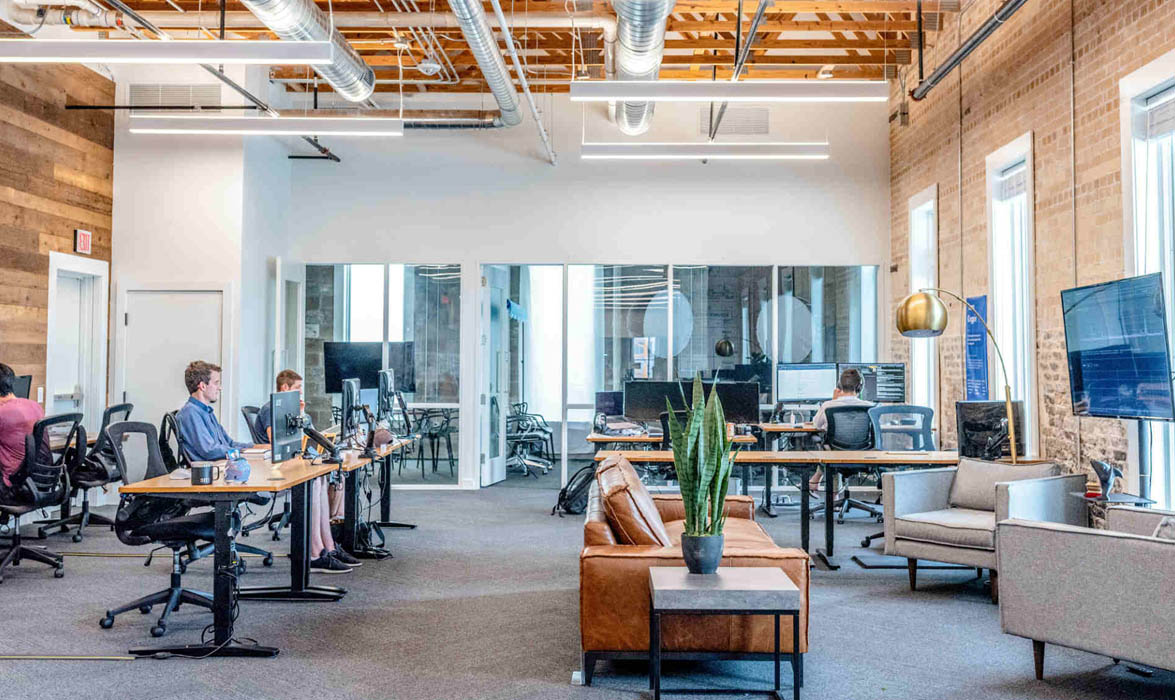
A growing reserve of study indicates that workplace environment can have a profound influence on employee wellbeing and productivity. Our managing director, Gareth Barber, explains why effective building management is so important.
Healthier employees equal happier and more productive employees. As equations go it’s not exactly rocket science, but even so the amount of research underlining the impact of working environments on employee wellbeing and output has become distinctly formidable in recent years.
Collectively, this research touches on every aspect of building systems management – from air supply and heating to lighting and noise conditions. For example, a recent study revealed that worker performance declines when CO2 levels are too high and temperatures are too warm or cold. With lower CO2 levels, employees’ test scores improved by up to 12%. And in one of the buildings tested, people worked 60% faster with reduced CO2 concentrations.
Generally speaking, it is accepted that a level of 250-350ppm is conducive to good concentration and wellbeing. The higher the background level rises above this range the more common are the incidences of drowsiness, headaches and even increased heart rate.
Knowledge is increasing all the time about different aspects of the workplace experience. The recent wealth of study about the potential of toxic chemicals to contribute to serious health problems, such as asthma, is a case in point. These chemicals routinely occur in furniture and food, and are another factor that employers are advised to take onboard.
Only 61% of employees believe that their workplace allows them to work productively
But if the need for effective building management is universal, its application is far from that at present. According to a recent study undertaken by Leesman Surveys of more than 500,000 employees, only 61% of employees believe that their workplace allows them to work productively. Only 59% described their working environment as being an enjoyable place to be, whilst a mere 51% said they would be proud to welcome visitors to their workplace.
These are concerning figures, and in a period when expectations of output and employee retention are evermore highly attuned they indicate a potential time-bomb for the business world if the problem is not addressed more successfully.
A bright new Vista for BMS
It is into this context that BG Energy Solutions is in the process of launching a new 2.0 version of its VISTA system, which allows building management systems to be optimised in a way that enhances their efficiency and improves conditions for employees. Conceived by our team of carbon reduction specialists, the system integrates seamlessly into an existing BMS, HVAC plant, lighting control and other smart interfaces.
Using the thermal mass signature of a building, VISTA’s innovative technology makes it possible to improve a building’s comfort conditions while automatically optimising energy usage by the HVAC systems. It also allows various building systems to work in harmony – rather than against each other – in a manner that makes overall working conditions more attractive.
A recent Office for National Statistics study indicating that the average UK worker is 26% less productive than a German worker and 23% less so than an American worker.
Among other features, the forthcoming VISTA 2.0 will enable building managers to take more effective control of CO2 and fine dust levels, thereby helping to reduce one of the most significant contributors to lung disease. The new version will also add new capabilities to control humidity levels and detect hazardous gas emissions, allowing employers to achieve a more holistic sense of how a building is performing and serving its occupants.
With a recent Office for National Statistics study indicating that the average UK worker is 26% less productive than a German worker and 23% less so than an American worker, it is evident that every reasonable step must be taken to make working conditions more conducive to higher output. Implementing effective building control is perhaps the most direct – and, ultimately, cost-efficient – method of making this happen.
We’re on a mission to make buildings better places to work, study and enjoy. Get in touch if you’d to hear more.